4 thermal management trends and additive manufacturing
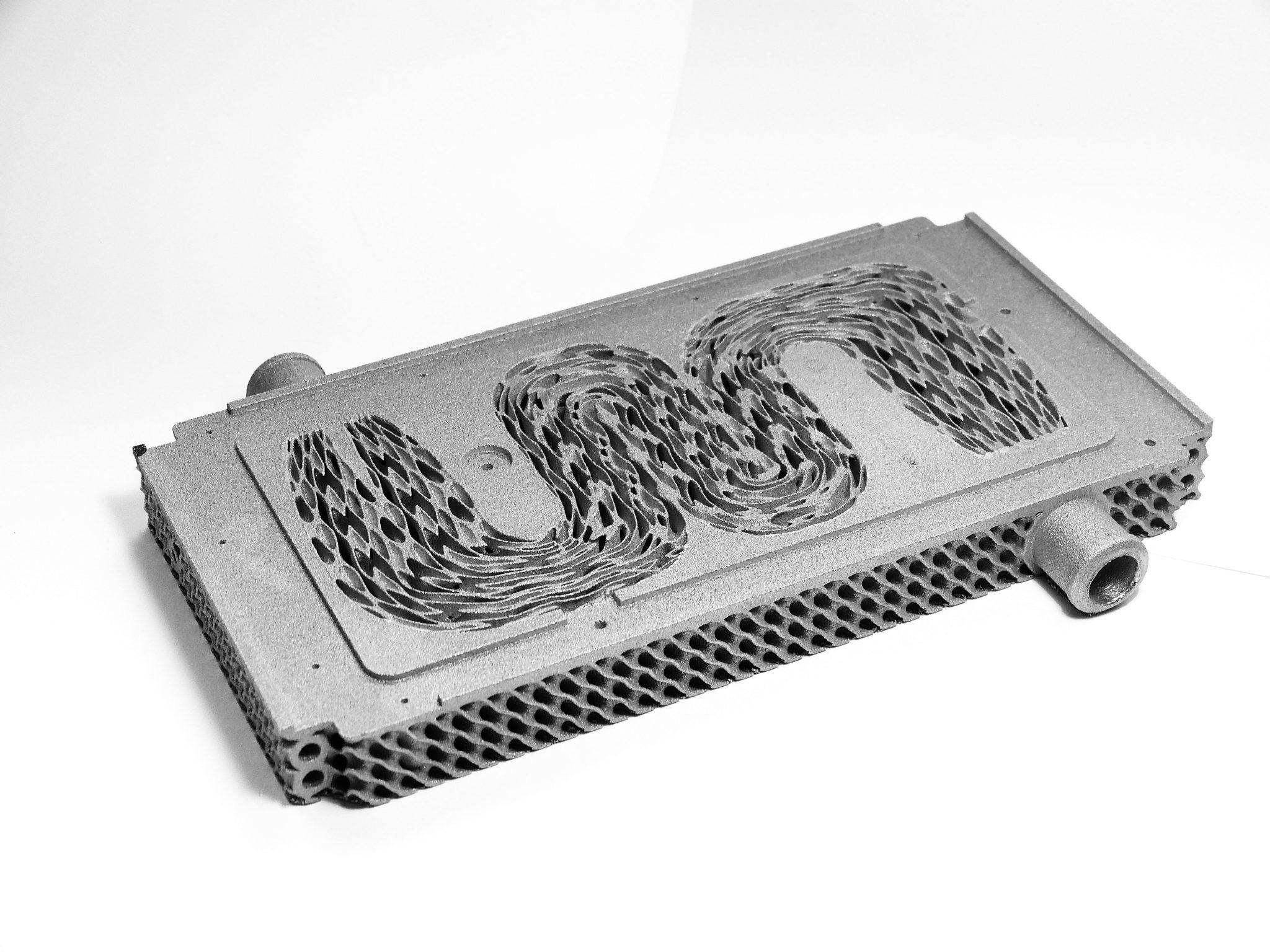
Written by nTop
Published on September 15, 2022
To be a true innovator in your industry, it’s crucial that you stay up to date on the latest engineering techniques and technologies. Find out about the four industry trends affecting thermal management and how additive manufacturing can help you accommodate them.
Products across all industries are becoming more innovative and incorporating more mechanical and electrical components. These products have increasing requirements that often have higher heat-generating potential. This heat poses a challenge for thermal management engineers, who must devise new ways of dissipating the additional heat to avoid damage to the components and ensure the product’s reliability, safety, and durability.
Heat exchangers are often incorporated into product designs to dissipate heat. These devices transfer heat from one fluid to another and play a crucial role in various applications, such as chemical processing, power plants, and automotive systems.
Understanding the latest trends that affect product requirements can help you design innovative and potentially industry-leading products. Let’s discuss some of the biggest trends in thermal management and how additive manufacturing can help you stay ahead of the competition.
Today’s most important thermal management trends

Cold plate with gyroid flow guides for EV inverter designed by Puntozero.
Multiple industry trends affect thermal management today because they require increasingly compact and efficient heat exchangers (HEXs). This article will explore the most important trends affecting heat exchanger design, including electric vehicles (EVs) and aircraft electrification, the rise of autonomous vehicles, modernization and retrofitting, and precision manufacturing and semiconductors.
EVs and aircraft electrification

An electric vehicle in a charging station. There are 1000+ microchips in a medium-sized car and 2000+ in an EV. Source
As demand for electric vehicles and hybrid or all-electric propulsion continues to rise, aerospace and automotive engineers will likely face new challenges related to thermal management. There are a few key things to consider when designing a thermal management system for electric vehicles and electrified aircraft. First and foremost, you must understand the heat sources in the system.
Heat sources can include power electronics, batteries, and motors. Efficient cooling is required in these complex systems to ensure vehicle performance, extend range, and prolong operating lifetime. Once you know where the heat comes from, you can determine the most effective way to dissipate it.
Improving HEX design is one way to control thermal management, but it has its challenges. As EV and aircraft product requirements evolve, you may face additional design constraints, such as HEX weight and size.

Interior of an autonomous vehicle concept. It is predicted that up to 15% of new cars sold in 2030 could be fully autonomous. Source
According to McKinsey, up to 15% of new cars sold in 2030 could be fully autonomous. However, the processing power necessary to achieve vehicle autonomy can be significant, increasing the number of chips needed and, therefore, the total heat generated by the chips. This presents a challenge for automotive engineers designing heat exchangers for autonomous vehicles because these systems must balance the need for cooling with the need for compactness and weight efficiency.
The control electronics in autonomous vehicles, whether fully independent or otherwise, are a critical safety factor. Malfunction caused by thermal instability can have dire consequences, including road accidents, severe injury, and even loss of life. Heat exchanger design plays a critical role in ensuring the safety and reliability of autonomous vehicles.
Modernization and retrofitting
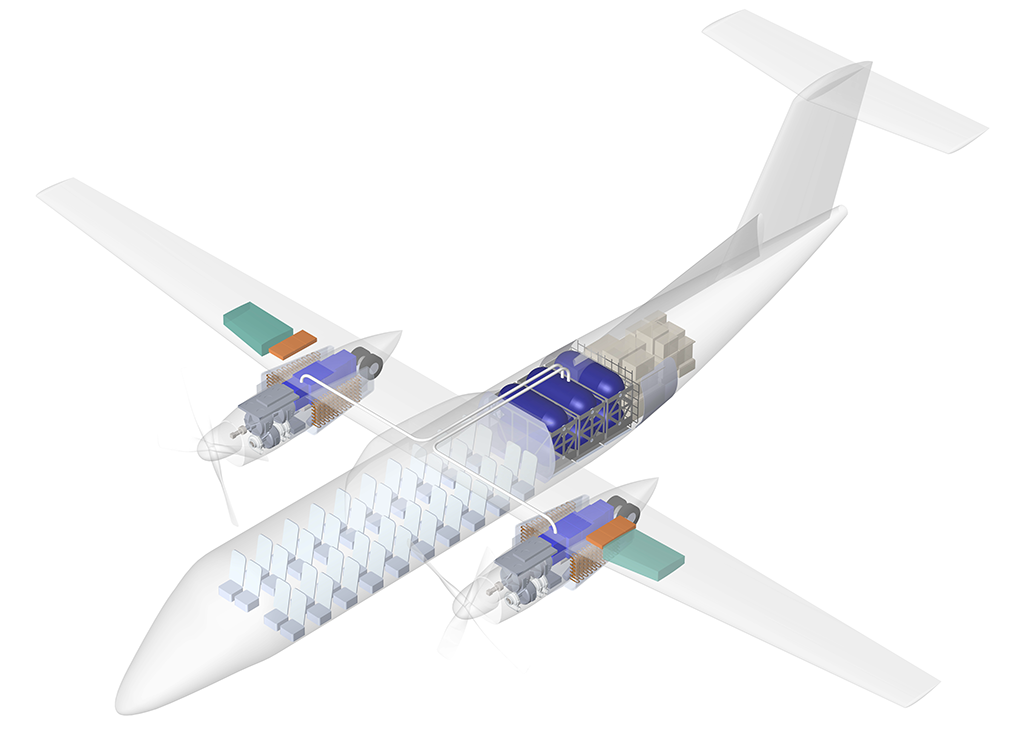
Aircraft retrofitted with electric motors. Aircraft electrification is projected to reduce CO2, NOX, and noise emissions by 30% by 2050. Source
Not every product was designed to meet today’s performance requirements, which has led to an uptick in companies retrofitting industrial machinery, aircraft, and other high-value assets with modern thermal management systems. This enables you to keep these assets in the field for longer and improve their overall performance.
However, modernizing and retrofitting introduces new engineering challenges. This business initiative often requires that new heat exchangers be introduced into the systems and that they provide higher heat transfer performance, all within the same or reduced space and at the same or reduced weight.
Precision manufacturing and semiconductors
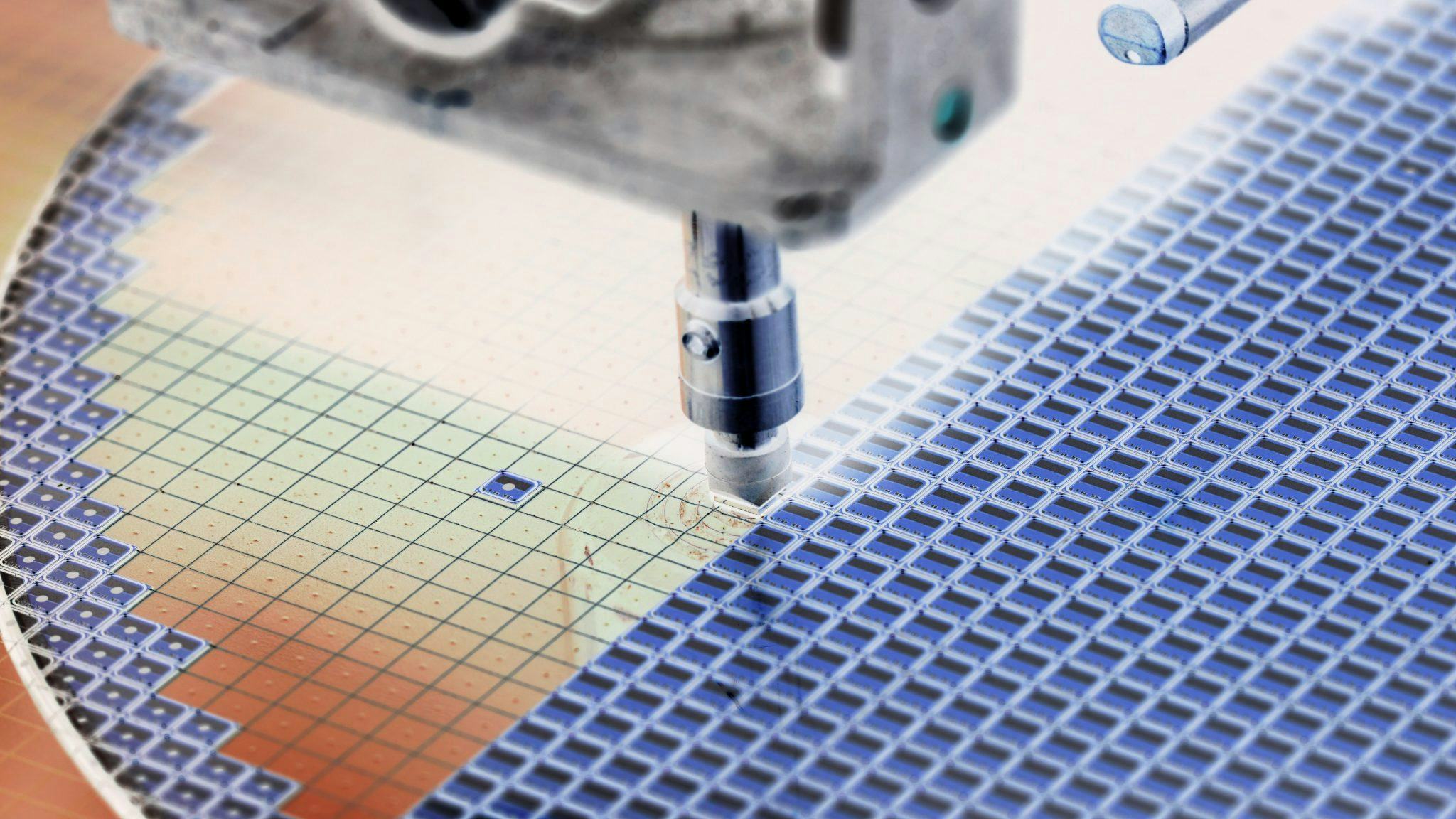
Silicon wafer in semiconductor manufacturing. Additively manufactured silicon wafer tables can improve temperature uniformity by 33%.
For precision manufacturing and semiconductors, the precise control of temperatures is essential to ensuring optimal performance and product quality. As such, the design of heat exchangers is an important consideration in these industries.
Supply chain disruption in recent years has led many manufacturers to establish new fabrication facilities in the US and Europe. To counteract the increase in cost associated with land and labor, these facilities must operate at higher efficiencies.
However, thermal management often poses a challenge for manufacturers hoping to improve efficiencies because it can be a productivity bottleneck. For example, heat flow significantly impacts both throughput and product quality in injection molding and thermoforming. In semiconductor manufacturing, time spent on wafer thermal tempering between stages makes a large dent in the number of chips produced every day.
To ensure that you can overcome these thermal management challenges, you must have access to the tools, techniques, and technologies necessary to create the next generation of heat exchangers.
How additive manufacturing benefits heat exchanger design
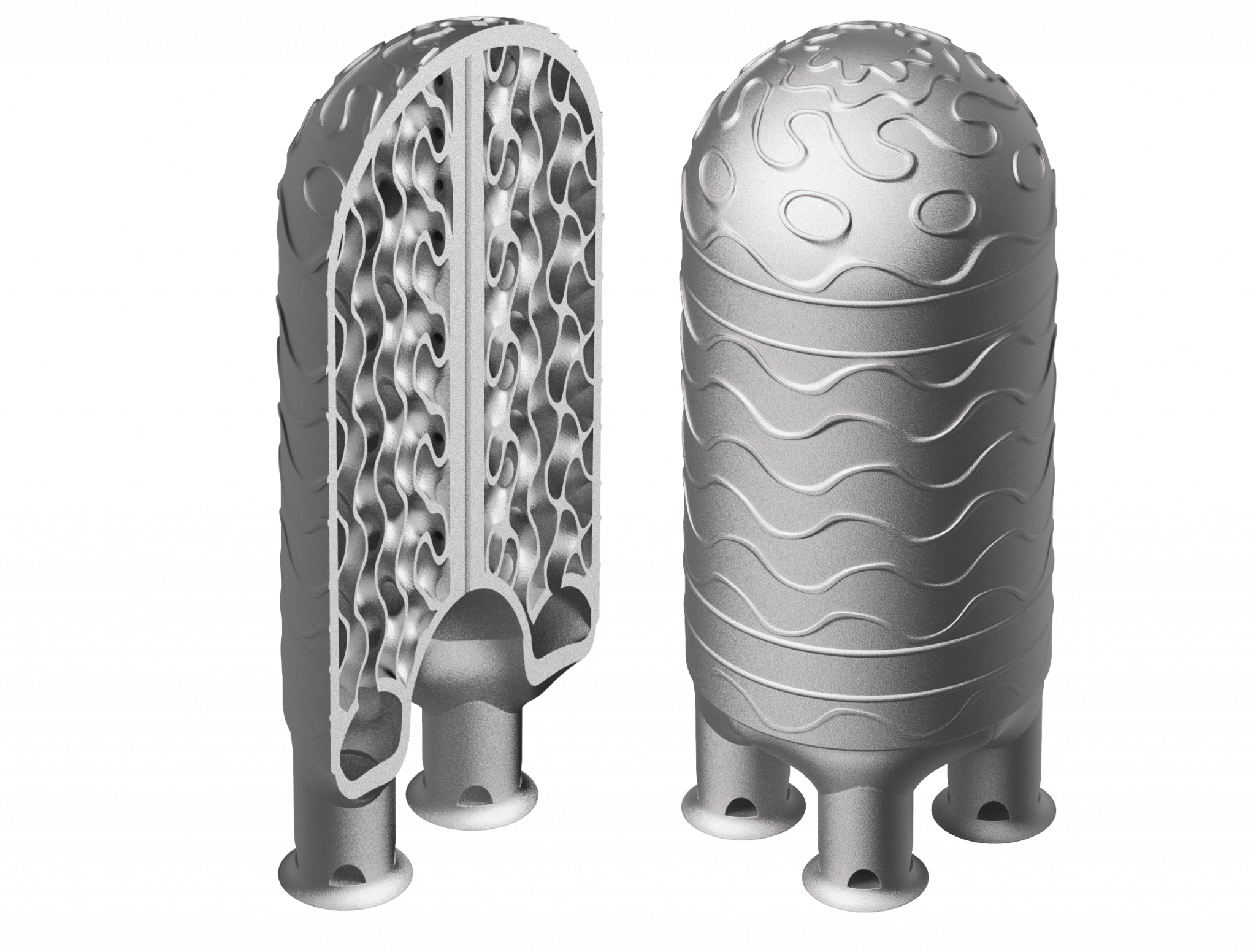
A compact fuel-cooled oil cooler for aerospace applications. It features a gyroid core and is optimized for additive manufacturing.
As this article has already explored, various trends contribute to the need for increasingly sophisticated and higher-performing heat exchangers. One way to develop more effective heat exchangers is through additive manufacturing (AM).
Additive manufacturing has fewer design limitations than traditional manufacturing processes, particularly when creating complex structures. This means that AM allows you to approach old thermal management problems from a fresh perspective. Here are some of the benefits of AM for thermal management.
Construct intricate lattices
AM is unique in its ability to construct highly complex lattice structures. These structures can allow you to fit the maximum surface area into the smallest volume while ensuring you meet all product requirements, such as weight, size, manufacturability, and performance. Specifically, Triply Periodic Minimal Surface (TPMS) lattices, such as gyroid and diamond TPMS structures, are ideal for improving HEX design.
By enabling you to pack more heat transfer area into the same overall space, AM can help you improve heat transfer efficiency.
Apply new shape optimization techniques
AM also allows you to introduce new shape optimization techniques into your design process. For instance, CFD simulations can be used to determine the flow paths inside a heat exchanger, which you can then leverage to generate a tailored geometry to optimize for specific requirements, such as flow rate or pressure drop.
The resulting design of this approach could be a highly optimized structure that would be impossible to manufacture with traditional processes.
Fabricate your HEXs in one piece
Traditional heat exchangers are typically manufactured using welding, brazing, or other joining techniques to assemble multiple components into a final product. This can create potential leak points and areas of reduced reliability.
In contrast, additively manufactured heat exchangers can be fabricated in one piece, without welding, brazing, or other joining methods. This consolidated design eliminates potential leak points and increases overall reliability. Consolidating an assembly into a single component can also reduce inventory and labor costs, resulting in greater value.
Software to design better heat exchangers
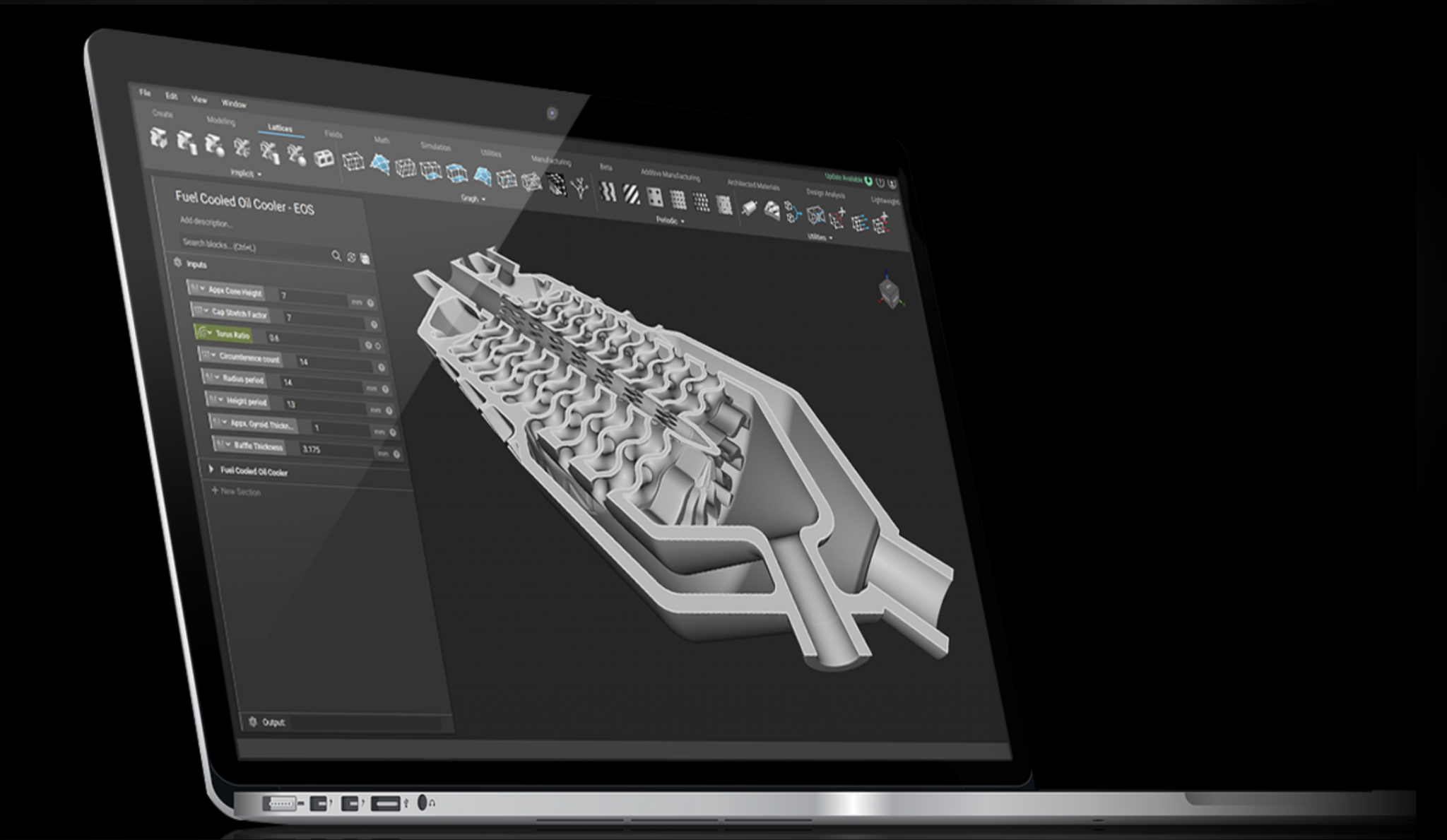
An advanced heat exchanger design in nTop.
You need access to advanced engineering design software to take full advantage of AM. nTop is the most powerful engineering design software for additive manufacturing. It gives you access to capabilities with unrivaled depth that allow you to control and finetune your AM HEXs.
nTop’s key thermal management features include:
- Access industry-leading lattice design, scalable to billions of elements
- Quickly gauge the thermal performance of your HEX and of the surrounding components with linear, non-linear, thermal stress and transient thermal analyses
- Generate new design candidates, mesh and send to Discovery Live for rapid iteration or a CFD code for virtual validation
- Slice and export machine data directly from an implicit body to bypass STL file size restrictions, or simplify mesh to a tolerance or threshold and export as STL, OBJ, or 3MF
- Control all fillet radii with boolean unions and accurately calculate weight
- Generate flow and thermal guides from thermal maps or flow fields (e.g., field-driven pins & fins) and use virtual baffles to control flow without overly restricting it
By combining additive manufacturing with advanced engineering design software like nTop, you can develop compact heat exchangers that offer superior reliability and performance.
Read our thermal management guide to find out more about how additive manufacturing can support your thermal management efforts.
Key takeaways
- Many industry trends — including EVs, autonomous vehicles, modernization and retrofitting, precision manufacturing and semiconductors — demand increasingly advanced heat exchangers.
- Additive manufacturing offers many benefits that can help you optimize your heat exchanger designs to meet these increasingly complex requirements.
- The right engineering design software enables you to maximize the benefits of additive manufacturing to optimize heat exchanger performance and accommodate the latest industry trends.

nTop
nTop (formerly nTopology) was founded in 2015 with the belief that engineers’ ability to innovate shouldn’t be limited by their design software. Built on proprietary technologies that upend the constraints of traditional CAD software while integrating seamlessly into existing processes, nTop allows designers in every industry to create complex geometries, optimize instantaneously, and automate workflows to develop breakthrough parts and systems in record time.




